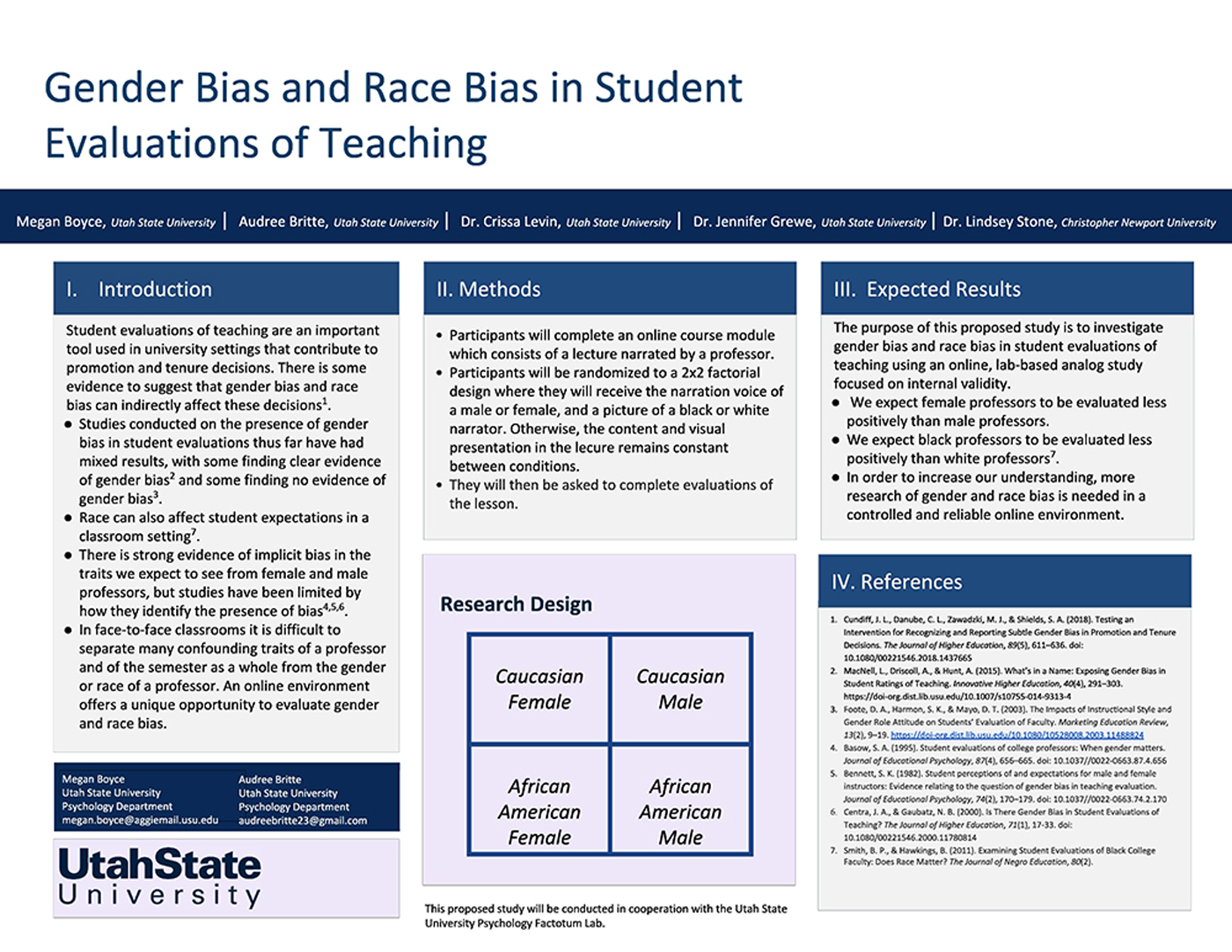Gender Bias in Student Evaluations of Teaching

Abstract
There is mixed evidence regarding the presence of gender bias in student evaluations of teaching (Foote, Harmon, & Mayo, 2003; Morgan et al., 2016). Given the importance placed on student evaluations of teaching in regard to promotion, tenure, and job retention, it is essential to determine whether gender bias is present and to what extent (Laube, Massoni, Sprague, & Ferber, 2007). Many previous studies have shown there is strong evidence of implicit bias in the traits we expect to see from female and male professors, but these studies have been limited by how they identify the presence of bias (e.g. Basow, 1995; Bennet, 1982; Centra & Gaubatz, 2000, etc.). In face-to-face classrooms, it is difficult to separate many confounding traits of a professor and of the semester as a whole from the gender of a professor. The purpose of this study is to determine whether an online lab-based analog study will reveal the presence of gender bias in student evaluations of teaching. The proposed course analog was controlled over a single setting, as opposed to the entire semester, allowing for stronger internal validity. The online study was run through Qualtrics at Utah State University and Christopher Newport University. The total number of participants was 149, with 51 men and 98 women. Participants received the same general course lecture but were randomly assigned to the narration voice of a male or female. Participants were then asked to fill out a teaching evaluation for their randomly assigned professor consisting of nineteen multiple choice questions. The female lecture was hypothesized to be rated less positively than the male, but the results for both lectures were rated similar. The only significant outcome being that the female lecturer was rated more enthusiastic than the male lecture, with a p value of <.001.

